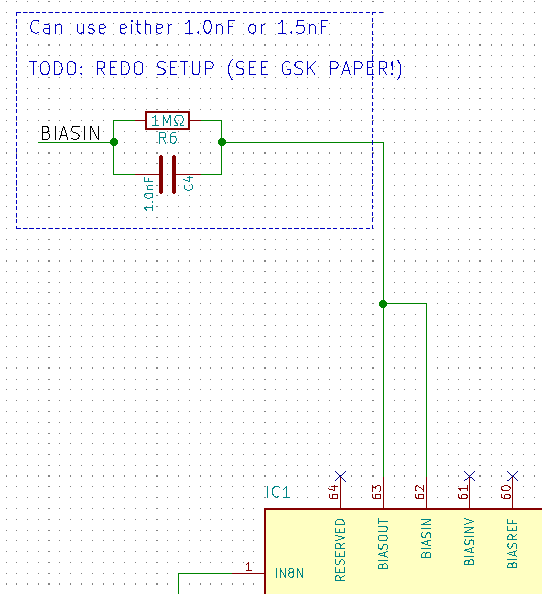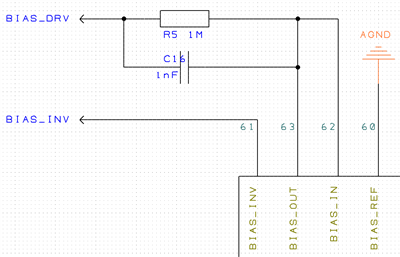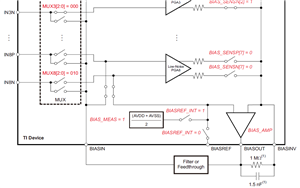Hi,
I would like to build a single-ended 4 channel EEG measurement system with a bias electrode. I'm confused about the function of BIASINV.
In Figure 34 in the datasheet, BIASOUT and BIASINV is connected with an RC filter, and BIASOUT is connected to BIASIN by feedthrough.
However, I also find some open source projects that implement BIAS I/Os differently, both of the projects below do not connect BIASINV with BIASOUT.
 https://github.com/MusaMahmood/KiCAD-EEG-INA828-nRF52
https://github.com/MusaMahmood/KiCAD-EEG-INA828-nRF52
 https://github.com/OpenBCI/V3_Hardware_Design_Files
https://github.com/OpenBCI/V3_Hardware_Design_Files
Should I follow the datasheet to connect BIASINV to BIASOUT with an RC filter? Or can I just float the BIASINV?



